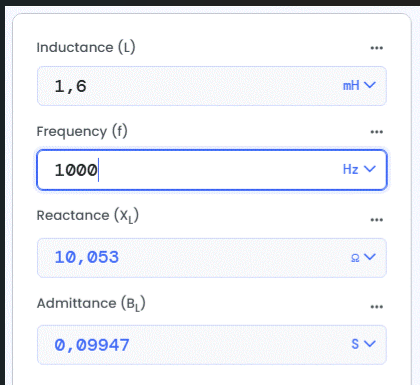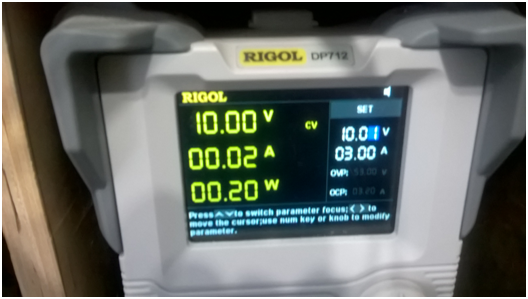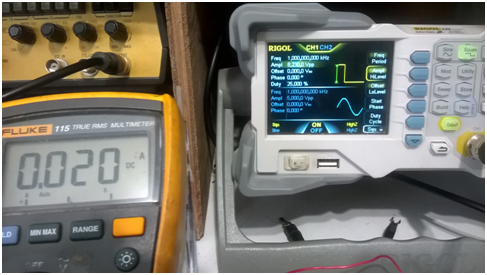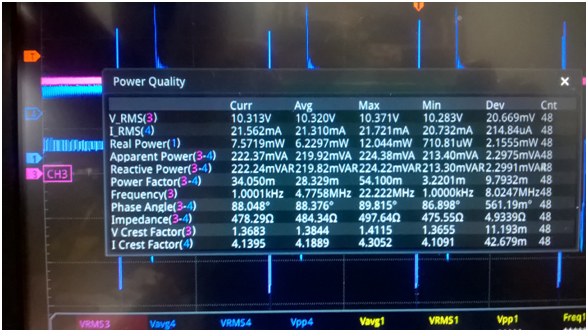Jagau
posted this
05 September 2025
- Last Edited 06 September 2025
I built a 1.6 MHz coil, and using an online calculator, we got reactance of 10 ohms versus a frequency of 1 kHz.

Xl = 2pi fl = 2x 3.1416 x 1000 x 1.6 mh = 10.053 ohms
On the PS, with an output of 10 volts and a DTC of 25%, we get this:

20 mA and 200 milliwatts output on the PS
We can see the same current consumption as the PS on the Fluke and a photo of the FG with the 1 kHz info and 25% DTC

Same amperage as on the PS 20 mA
On the oscilloscope software, we can see an analysis of the circuit in question; the voltage is measured with a differential probe and the current with a Tek current probe.

Since the circuit uses an inductor with an impedance of approximately 10 ohms, the reactive power of the inductor corresponds to that of the software, i.e., 219 milliwatts, and on the PS, 200 milliwatts. The scope is always more accurate than a PS.
Quote from Bearndorfer:
high side of coil current can be 'ordinary DC' while on low-side we have huge components of reactive energy.
The actual average power of the circuit is therefore 6.3 milliwatts, even if the PS gives 200 milliwatts.
This example can help us understand our circuit for future analysis, which is why I say that the ZPM is beyond unity.
Jagau
What we consider to be empty space is merely a manifestation of unawakened matter. N.T.













